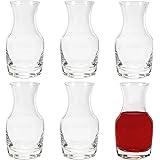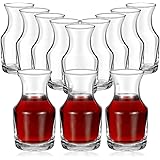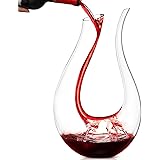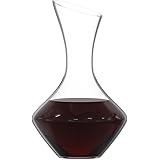The question often arises: Why does Bordeaux maintain its unparalleled global prominence in the wine world? Its enduring fame, stretching across centuries and continents, is not merely accidental. Several critical factors converge to establish Bordeaux’s unique dominance. This article, building on the insights from the video above, delves into the foundational pillars of Bordeaux wine’s success. We will explore its remarkable terroir, the strategic 1855 Classification, and the formidable La Place de Bordeaux distribution system. These elements combine to explain how Bordeaux wines have permeated every corner of the world.
The Immutable Power of Terroir
Bordeaux’s geographical location provides an unmatched advantage. Situated in southwestern France, it benefits from a temperate maritime climate. This climate is ideal for grape cultivation. It avoids extreme cold or intense heat. Millions of years ago, this land was marshy wetland. Consequently, the soil boasts abundant nutrients.
The Garonne River flows through the region. It provides vital water resources. This river, along with the Dordogne, forms the Gironde estuary. These waterways moderate temperatures. They create unique microclimates benefiting specific grape varieties. Furthermore, the land is relatively flat. This allows for vast, expansive vineyards. Such an environment facilitates high production volumes. This combination of quality and quantity is foundational to Bordeaux’s global reach.
Different soil compositions define the region. The Médoc, on the Left Bank, is characterized by gravelly soils. These soils are perfect for Cabernet Sauvignon. The Right Bank, including Saint-Émilion and Pomerol, features clay and limestone. Merlot grapes thrive in these conditions. This diverse terroir contributes to the region’s rich array of Bordeaux wines.
The Enduring Legacy of the 1855 Classification
A second key to Bordeaux’s success is its renowned 1855 Classification system. This framework was devised for the Universal Exposition in Paris. It identified and ranked the leading châteaux. The system initially classified red wines from the Médoc. It also included sweet wines from Sauternes and Barsac. Wines were ranked from First to Fifth Growth. This classification was based purely on market price and reputation. Simplicity was its hallmark.
Such a system would be impossible to implement today. Modern classifications require decades of blind tastings and negotiations. Yet, in 1855, it was established with government support. A crucial distinction is its focus on châteaux. Unlike Burgundy’s vineyard-based classification, Bordeaux classified entire estates. This allowed châteaux to acquire more land. They could then increase their production. Château Lafite, for instance, produced 5,000 cases in 1855. Today, its annual output reaches around 30,000 cases.
The First Growth status is exceptionally stable. It acts as an ironclad guarantee of sales and prestige. The Rothschild family understood this early. They acquired both Château Lafite and Château Mouton in the 19th century. Their continued ownership underscores the investment value. This fixed hierarchy cemented Bordeaux wine’s elite status. It provided a clear, easily understandable guide for consumers worldwide.
La Place de Bordeaux: A Global Sales Network
Beyond quality and classification, Bordeaux’s true genius lies in its unique sales system. This is known as La Place de Bordeaux. Historically, Bordeaux’s coastal location made it a vital port. Wines were easily exported directly from the docks. Grape cultivation began here in the 1st century AD. English rule in the 12th century further propelled its fame. Bordeaux wine became a status symbol among the aristocracy.
This system evolved out of necessity. Wine producers focused on viticulture and winemaking. They lacked time for complex sales and distribution. Astute merchants saw an opportunity. They created an intermediary structure. This structure consists of Courtiers and Négociants. Courtiers act as brokers. They manage documentation and logistics for the châteaux. Then, they sell to hundreds of Négociants. These Négociants form a vast global distribution network. They develop client relationships worldwide. They ensure Bordeaux’s presence in key markets like Hong Kong and Japan. Many non-Bordeaux fine wines have joined La Place. Opus One, Ornellaia, and Almaviva are prime examples. Some even establish offices in Bordeaux. They hire French executives to leverage this powerful system. Even Château Latour, which left the en primeur market, relies on La Place for sales. This robust system continues to thrive. It proves invaluable even in the age of digital information. It optimizes the entire wine value chain. This benefits both producers and global consumers of Bordeaux wines.
Market Dynamics and Investment Potential
The global demand for Bordeaux wine ensures its continued prominence. Recent economic fluctuations have impacted prices. Some renowned vintages have seen price adjustments. For instance, an early 2024 offer for Lafite en primeur was around HKD 3,000+ per bottle. This is significantly lower than peak prices, which reached HKD 6,000-7,000. Even the second label, Carruades de Lafite, once commanded similar prices.
These price variations highlight the investment aspect of Bordeaux’s fine wine market. While the 2024 en primeur releases will only be delivered in two years, the enduring allure of names like Lafite remains strong. The consistent quality and stable supply, bolstered by the sophisticated distribution, ensure Bordeaux retains its top position in wine exports and global recognition. This makes Bordeaux wines a compelling choice for both connoisseurs and collectors alike.







